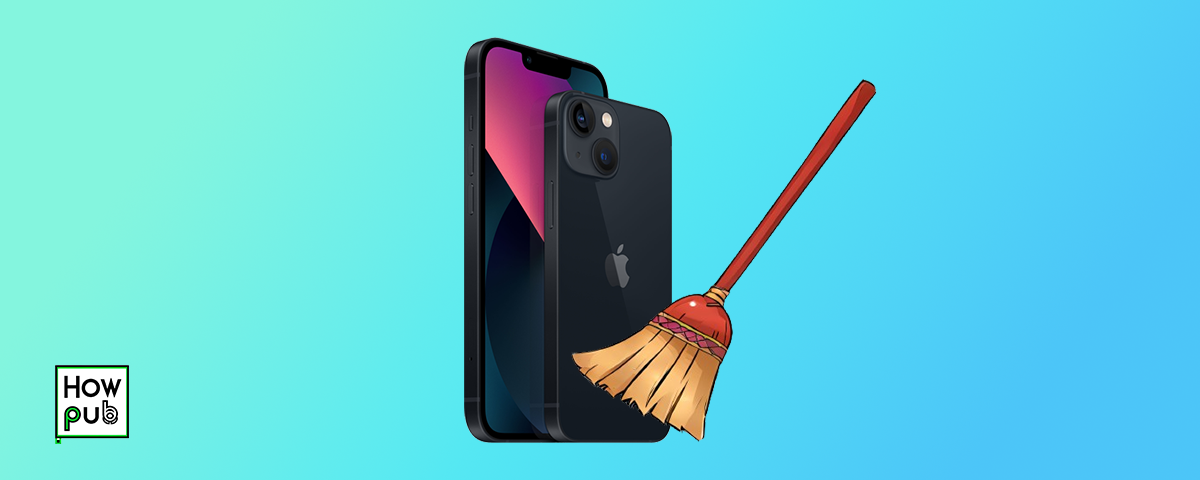Introduction
Regular maintenance is essential to keep your iPhone in top condition, both in terms of appearance and functionality. From cleaning the screen to protecting the ports, proper care can extend the life of your device and ensure it continues to perform well. This guide will walk you through the best practices for cleaning and caring for your iPhone, ensuring it remains in excellent condition.
Step 1: Cleaning the Exterior of Your iPhone
Keeping the exterior of your iPhone clean is important for both hygiene and functionality. Dirt and grime can accumulate over time, especially on frequently touched areas like the screen and buttons.
How to Clean the Screen
-
Turn Off Your iPhone:
- Before cleaning, turn off your iPhone to avoid accidental taps and to see smudges more clearly. Press and hold the power button until the power-off slider appears, then slide to power off.
-
Use a Microfiber Cloth:
- Gently wipe the screen with a clean, dry microfiber cloth. Microfiber is effective at removing fingerprints and smudges without scratching the glass.
-
Avoid Excessive Pressure:
- Apply gentle pressure when cleaning. Avoid pressing too hard, especially on the edges of the screen.
-
Use a Damp Cloth for Stubborn Marks:
- If the screen is particularly dirty, lightly dampen a corner of the microfiber cloth with water or a screen-safe cleaner (ensure it's alcohol-free). Wipe the screen again, then dry it with the dry part of the cloth.
How to Clean the Back and Sides
-
Remove the Case:
- If your iPhone is in a case, remove it to clean the back and sides thoroughly.
-
Wipe with a Microfiber Cloth:
- Use a dry microfiber cloth to clean the back and sides of the device, just as you did with the screen.
-
Clean Around Buttons and Ports:
- Pay special attention to areas around buttons and ports where dirt can accumulate. Use a soft, dry brush (such as a small paintbrush) to clean these areas without causing damage.
Step 2: Cleaning the Ports and Speakers
Dust and debris can accumulate in your iPhone’s ports and speakers, potentially affecting their performance. Regular cleaning can help prevent issues such as charging problems or muffled sound.
How to Clean the Lightning Port
-
Turn Off Your iPhone:
- Power off your iPhone before cleaning the ports to avoid any potential damage.
-
Use a Soft Brush:
- Use a soft, dry brush or a toothpick to gently remove debris from the lightning port. Be careful not to insert the tool too far into the port to avoid damaging the contacts inside.
-
Compressed Air (Optional):
- For more stubborn debris, use a can of compressed air to blow out the port. Hold the can upright and use short bursts to avoid moisture buildup.
How to Clean the Speakers
-
Use a Soft Brush:
- Gently brush the speaker grilles with a soft, dry brush to remove dust and dirt. Be gentle to avoid damaging the speaker mesh.
-
Avoid Using Liquids:
- Do not use liquids to clean the speaker grilles, as moisture can damage the internal components.
Step 3: Protecting Your iPhone
In addition to regular cleaning, protecting your iPhone from physical damage is an important part of maintenance.
How to Use a Case and Screen Protector
-
Choose a Quality Case:
- Select a case that offers good protection against drops and impacts. Cases made from materials like silicone, rubber, or polycarbonate provide excellent shock absorption.
-
Install a Screen Protector:
- Apply a tempered glass or film screen protector to shield the screen from scratches and cracks. Screen protectors are easy to replace and can extend the life of your iPhone’s display.
-
Clean the Case Regularly:
- Remember to remove and clean the case periodically, as dust and dirt can accumulate between the case and the iPhone, potentially causing scratches.
Step 4: Caring for Your iPhone’s Battery
Proper care of your iPhone’s battery can prolong its lifespan and ensure your device remains operational throughout the day.
Tips for Maintaining Battery Health
-
Avoid Extreme Temperatures:
- Keep your iPhone within its recommended temperature range (0° to 35° C or 32° to 95° F). Extreme cold or heat can degrade the battery’s performance and lifespan.
-
Use Optimized Battery Charging:
- Enable Optimized Battery Charging in Settings > Battery > Battery Health. This feature learns your charging routine and slows down battery aging by reducing the time your iPhone spends fully charged.
-
Avoid Letting the Battery Drain Completely:
- Try to keep your battery level between 20% and 80% as much as possible. Frequently letting your battery drain completely can shorten its lifespan.
-
Charge with Quality Accessories:
- Always use Apple-certified charging cables and adapters to ensure safe and efficient charging. Avoid using cheap, unbranded chargers that can potentially damage your battery.
Step 5: Software Maintenance
Keeping your iPhone’s software up to date and regularly clearing out unused apps and data is crucial for maintaining optimal performance.
How to Update iOS
-
Check for Updates:
- Go to Settings > General > Software Update. If an update is available, tap Download and Install.
-
Automatic Updates:
- Enable automatic updates by going to Settings > General > Software Update > Automatic Updates. This will ensure that your iPhone always has the latest security patches and features.
How to Free Up Space
-
Review Storage Usage:
- Go to Settings > General > iPhone Storage to see a breakdown of your storage usage.
-
Delete Unused Apps:
- Identify apps you no longer use and delete them to free up space. You can also offload unused apps, which removes the app but keeps its data.
-
Clear Cache and Data:
- Clear the cache and data of apps like Safari or social media apps, which can accumulate over time and take up significant storage.
Conclusion
Regular cleaning and proper maintenance are key to ensuring your iPhone remains in excellent condition and performs at its best. By following these tips for cleaning, protecting, and caring for your iPhone, you can extend its lifespan and keep it looking and functioning like new. Incorporate these habits into your routine to get the most out of your device.



